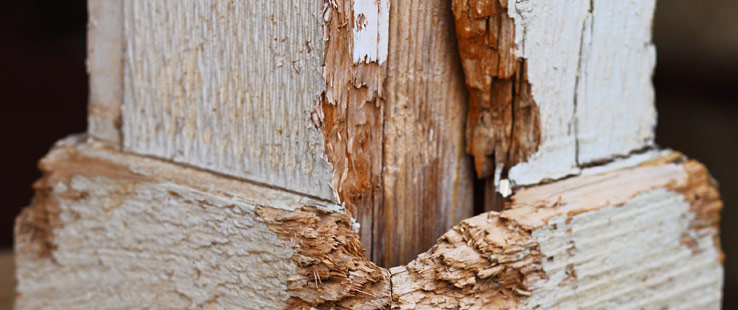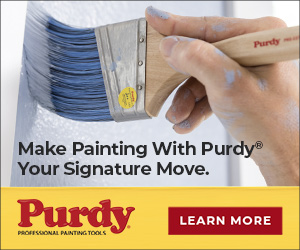Repair Without Despair
 John Peek, owner of San Diego-based Peek Brothers Painting, graduated from the University of California-Berkeley with a bachelor of science in Business Administration and did a stint in law school—so it’s no surprise he’s highly tuned into the business aspects of the painting industry.
John Peek, owner of San Diego-based Peek Brothers Painting, graduated from the University of California-Berkeley with a bachelor of science in Business Administration and did a stint in law school—so it’s no surprise he’s highly tuned into the business aspects of the painting industry.
One thing Peek has learned during his 33 years in the business is the value of advising and consulting with homeowners. This includes discussions about areas where wood repair and replacement are required. It’s a conversation that is as much about customer satisfaction as it is protecting his business. With wood, sometimes problems look like they’re only skin deep, but then issues like termites can be discovered after cleaning and scraping.
“It’s about managing your business from a legal standpoint. … Our proposals include a disclaimer, which states that only the listed items are covered,” he said. “If, in the course of preparation, we find additional damage, we will bring it to their attention and give them a price. Then, they can decide whether to have us do it or hire someone else.”
Doing it right
Wood repair can be tricky, but must be done right. Cutting corners only leads to bigger problems down the road. Some of Peek’s tips include:
Use highly adhesive and flexible caulk. Invest in products that are for the purpose they’re intended. Cheap caulk only leads to a homeowner calling after a few months to ask about gaps, cracking and peeling.
Consider the environment. You can get away with a cosmetic repair with polyester fill or lightweight spackle on an interior job—but it’s destined to pop in an exterior environment with expansion and contraction.
Spend the money for an epoxy or vinylester filler. It costs a lot more and takes longer to dry, but its superior durability makes for happy customers.
Use the correct process. There’s no shortcut: Dig out the rot, put some consolidator in the rotted area, then use an epoxy filler if you want the job to last.
Prime all six sides. If you’re replacing a piece of wood, prime all six sides to prevent water and termites from entering again.
A word on plastics. In areas where there’s contact with the ground, concrete or brick, use a more expensive composite or plastic wood.
Opening the door to satisfied customers
Doors are a chronic source of rot and cracking. A few things to consider …
Use clear caulk at the bottom window-wood junction on French doors to prevent water seepage and rotting. Advise the homeowner to watch that area.
Ask homeowners to purchase their doors unprimed. Before priming and painting, make sure to fill the holes at the bottom and top of the doors with polyurethane or caulk, then add a smear coat for good measure.
In areas of intense sun exposure, advise against rail-and-stile Douglas fir veneer doors, and steer customers toward solid mahogany, teak or fiberglass.
Quality wood repairs add time and cost to a job. But cutting corners and avoiding honest conversations with customers only harms the relationship and compromises the job.
“It makes it a little more difficult to sell the paint job, but you have to sell the value,” Peek says. “People know we cost more, but it lasts longer. It’s the same people who drive a Lexus—they’re willing to make the investment for the long haul so the cost per year is less.”




